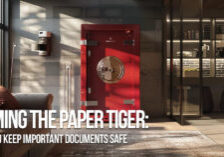Buckle Up for Savings: How Car Safety Ratings Save You Money

Buckle Up for Savings: How Car Safety Ratings Save You Money
Car safety is no joke. It’s about protecting you, your loved ones, and everyone on the road. But here’s a fun fact: choosing a safe car can also save you big bucks on insurance! Let’s dive into the world of NHTSA car safety ratings and how they can put more money in your pocket.
From Crash Dummies to Car Champions: How the NHTSA Tests Vehicle Safety
The National Highway Traffic Safety Administration (NHTSA) goes beyond crash test dummies. They conduct real-world crash tests to evaluate how well vehicles protect occupants in various collision scenarios. Think of it as a scientific competition for car safety, with a 5-star rating system indicating a vehicle’s overall performance.
Putting Cars Through the Wringer: The NHTSA Test Battery
Each year, NHTSA selects a representative sample of new vehicles to undergo a series of tests. These tests focus on three main areas of crashworthiness:
- Frontal Crash Test: Simulates a head-on collision between two vehicles traveling at 35 mph each. This test assesses the vehicle’s structure and its ability to safeguard passengers in a frontal impact.
- Side Barrier Crash Test: Mimics a T-bone collision where another vehicle hits the driver’s side at 35 mph. This test evaluates how well the car protects occupants during a side impact.
- Roof Strength Test (NOT Side Pole): There’s no “pole position” here! This static test measures a vehicle’s rollover resistance using a metric called the Static Stability Factor. This helps assess a vehicle’s susceptibility to rollovers, particularly important for SUVs.
Beyond Crashworthiness: Advanced Technology Evaluation
In addition to these core tests, NHTSA also evaluates the effectiveness of certain Advanced Driver-Assistance Systems (ADAS) on selected vehicles. These systems include lane departure warning, forward collision warning, and automatic emergency braking, which can all play a crucial role in preventing crashes.
By conducting these rigorous tests and sharing the results with consumers, NHTSA empowers car buyers to make informed decisions by prioritizing safety when choosing a vehicle.
Safety Tech Gets a Grade Too!
The NHTSA doesn’t just look at how a car holds up in a crash. They also factor in modern safety features like automatic emergency braking, lane departure warnings, and even fancy airbags. The more high-tech safety features a car has, the better its overall safety rating.
So, How Do I Find These Ratings?
The NHTSA offers a free online resource with all their ratings, including a handy vehicle comparison tool. This lets you see how different cars stack up against each other in terms of safety.
Safety First, Savings Second (But They Go Hand-in-Hand!)
Here’s the golden nugget of information: cars with higher NHTSA safety ratings tend to be cheaper to insure. Why? Because insurance companies figure a safer car means you’re less likely to get into an accident, which means less money they have to pay out in claims. So, by choosing a car with a good safety rating, you’re not just protecting yourself, you’re protecting your wallet too!
Ready to Get a Quote? We’ve Got You Covered
Before you make that final decision on a new car, don’t forget to consider the insurance costs. Contact us today for a free, no-obligation quote on car insurance. Let’s help you find the perfect car that’s safe, stylish, and won’t break the bank to insure. After all, driving safe should also save you money!










